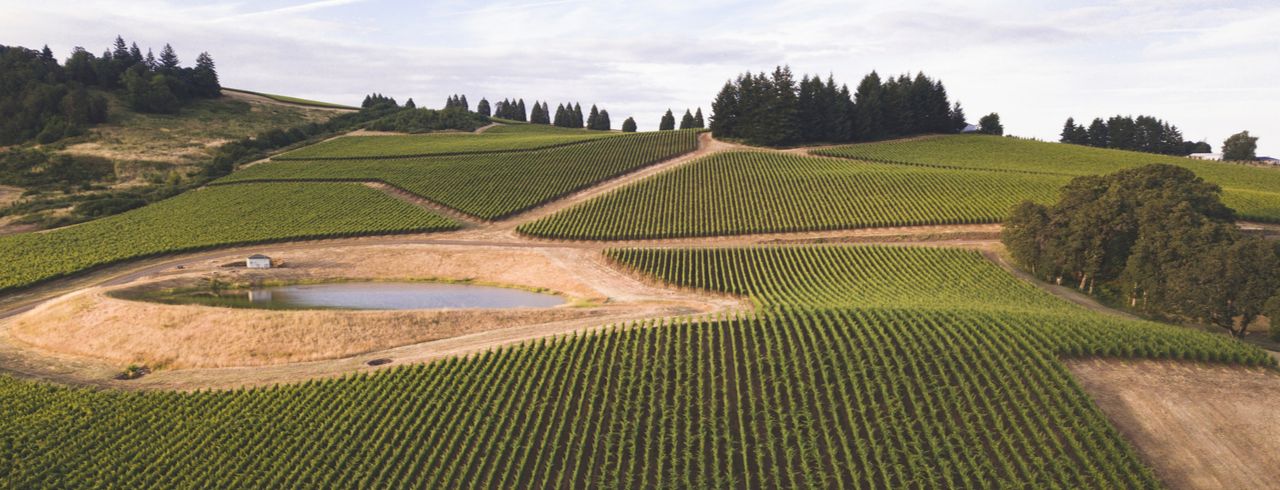
Merlot
Murr-low
Parents & Origin: Cabernet Franc and Magdeleine Noire Grape: Dark blue-colored wine grape variety that is used as both a blending grape and for varietal wines Flavors: Cherry, Plum, Chocolate, Bay Leaf, Vanilla Notable Regions: Bordeaux, France; Italy, United States, South Australia, Chile, Argentina Sweetness: Bone-dry Body: Medium-Full Tannins: Medium-High Acidity: Medium ABV: 13.5-15%

The History of Merlot
Merlot is first traced back to Bordeaux, France, in 1784 when a French official labeled the grape as one of the area’s best. Several years later, in 1824, the word “Merlot” was assigned to the grape because the local blackbird, named merlau, had a particular liking for the ripe grapes.
By the 19th century, the vine was regularly planted and harvested in the Médoc, introduced to the Swiss, and harvested near Venice, Italy in 1855. Red wine had a major popularity resurgence in the US in 1990, resulting in a heavy appreciation of Merlot. Funny enough, Merlot became one of the most popular reds due to its ease of pronunciation and softer and fruity profile.
Interesting Fact: Merlot can easily be confused during a blind tasting! The mocha, chocolate, and blue fruit notes can give it away.
Merlot Food Pairings
The more dominant the Merlot in the wine, the bolder of the meal you should go because of its bold and boisterous nature!
The Best Merlot Food Pairings
The less Merlot in the blend, the easy of a meal you should go! Try pizzas, penne pastas, barbecues and bacons. For more prominent Merlot blends, pair heavier and sultry meats. Rustic and earthy meals are also fantastic, with strong Merlots such as ratatouille, aged goat cheese, and braised meat.
Food Pairings to Avoid with Merlot
Merlot is almost the opposite of a classic white wine, meaning you should avoid delicate fish and light salads. Spicy sauces and foods clash with Merlot; make sure to toss the chilis!
Merlot Tasting Notes

Merlot is known by occasional wine drinkers and sommeliers alike to be especially smooth from start to finish. But the wine is specifically vinified, making it very versatile. The major taste palettes depend on which climate and location the vines were harvested from-- there’s a major difference between Merlots from cool and warm regions.
Warm Climate Merlot
The Merlots from California, Argentina, and Australia are the bottles with the special attributes a Merlot can only get from a warm climate. These wines are more fruit-based and contain fewer tannins. Producers from these regions use an oak treatment of 24 months to give the wine a stronger body.
Cool Climate Merlot
The Merlots from France, Italy, and Chile are commonly mistaken for Cabernet Sauvignon. These wines are more structured, tannin-rich, and possessive of earthy flavors such as tobacco and tar.
View our entire collection of Merlot wines here!
Merlot in a Nutshell
Since its first mention in Bordeaux, France, in the 1800s, the appreciation of Merlot slowly but surely spread in reputation around the globe. Winemakers discovered its chameleon-like nature based on location and atmosphere and experimented with dark-blue grapes to create the finest and smoothest wines. Whether enjoyed with friends surrounding a pizza or a hearty braised beef meal, a glass of Merlot will always leave the modern wine lover satisfied!
Ready to learn more? Don't forget to check out our other wine guides:
Red Wine GuideSparkling Wine Guide
White Wine Guide
Rosé Wine Guide
Dessert Wine Guide